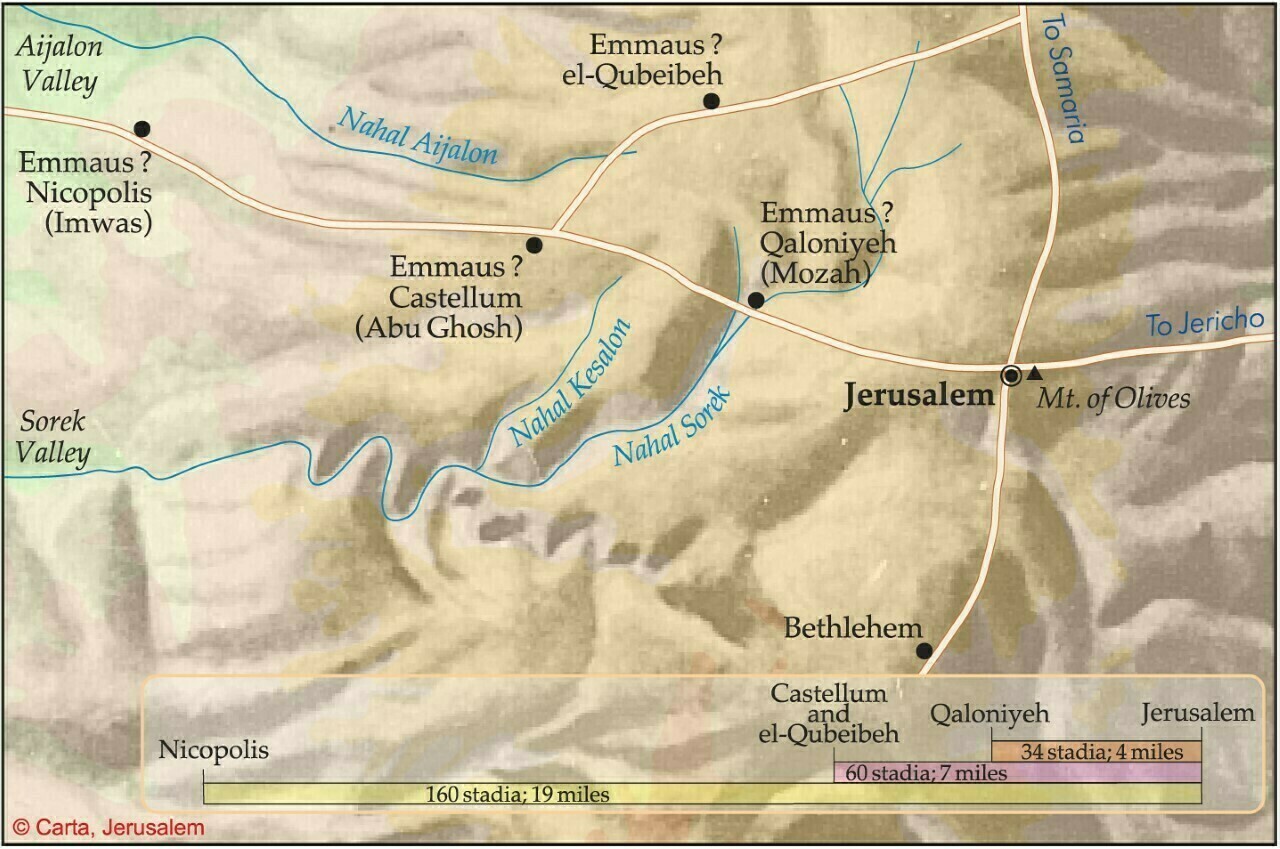Emmaus Road Headed West
Some time ago, a small detail from the Road to Emmaus story in Luke's Gospel surprised me. It occurred to me that the theme of "new" exodus which is vital to Luke's telling of what Jesus came to do, finds a climax in the Road to Emmaus. Let me explain.
The two travelers walk from Jerusalem and discuss the report that some folks saw the tomb empty, in addition to angles who said Jesus is alive. While they travel, a man they don't recognize (who Luke narrates is Jesus) joins them. He inquires as to the topic of conversation. Cleopas explains and the stranger takes the news in stride. Without browbeating as to who he is, Jesus proceeds to cite evidence from the Hebrew bible that it's all true of him. He says:
"Was it not necessary that the Christ should suffer these things and enter into his glory?"
After which Luke picks up narration:
And beginning with Moses and all the Prophets, he interpreted to them in all the Scriptures the things concerning himself.
Here's what I learned.
Cleopas and possibly his wife, as two representative disciples, journey west toward a new, recreated world having the true story of redemption and forgiveness recounted to them, by Jesus. Since Adam and Eve were exiled to the east from the garden, humankind suffers to be back with God. He comes to us. Not since Adam and Eve has a couple walked with God out from exile into new creation. He frees us to travel through the ordeal into eternal rest with him, in the City of God. The way has been given.
Of course we can't know for certain where the city or village of Emmaus stood. However, the map below offers three possible sites of the historical Emmaus, all of which sit west of Jerusalem. While it's true that the two travelers return east to Jerusalem to share the good news of Jesus' appearance, this, theologically, fits with the centripetal, sending nature of God—an incipient story of the command to go and initiate disciples into the community with a God bath.
